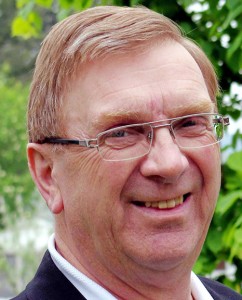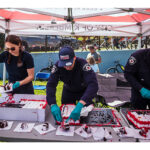Home »

Learning to live in the now
In December of 2012 Little Brown and Company released the three-volume biography of Winston Churchill called ‘The Last Lion’ by William Manchester and Paul Reid.
Manchester, historian and author, had started to write the biography after a chance meeting with Churchill on a passenger liner returning to the UK in 1951. In 2003 and in failing health he enlisted Paul Reid to finish the work. The end result was three epic volumes; the last one being 1,182 pages in length.
I have been fascinated with Churchill all my life and looked forward to the release of this set with great anticipation. I got the boxed set as a Christmas gift that December and set it as a goal to read all three volumes before Christmas 2013. The first two volumes were fascinating reading about Churchill’s growing up and early career in the military, later as a war correspondent and Member of Parliament. Volume three, which focuses on the years from 1930 until the end of the Second World War, has been a bit more of a challenge to finish.

What is fascinating about great men such as Churchill, Roosevelt, MacDonald and Laurier is that they accomplished so much in their lives with the time they had available. Ironically, they all had exactly the same amount of time as you and I do. They were not born with more than 24 hours in a day or 365 days in a year, and yet what they did with the time they had is truly remarkable. In Churchill’s case, in addition to being a Member of Parliament for over 60 years, and Prime Minister of Great Britain throughout the Second World War, he also earned a living as an author. In fact a prolific author. Which raises the question. Where did he find the time?
I found some of the answers to that question in a biography of Dr. William Osler, the famous Canadian professor of medicine and one of the four founders of Johns Hopkins Hospital, he is considered to be the father of modern medicine. In 1905, Doctor Osler, was made Regius Professor of Medicine at Oxford. He was knighted in 1911. While speaking to the graduating medical students at Princeton, Dr. Osler commented that, his success was not due to his exceptional intellect but to learning to live in day tight compartments. He said that he was a pretty ordinary student until he read a quote from Thomas Carlyle: “Our main business is not to see what lies dimly at a distance, but to do what lies clearly at hand.”
Dr. Osler said he realized that what happened in the past was done, what would happen in the future he had no control over and therefore he had to live only in the now, in day tight compartments, and to stop worrying.
Dr. Osler changed his life with that simple truth; his accomplishments are of historic proportions, his contribution to modern medicine is still considered significant today. Oh by the way he graduated top of his class at McGill.
I have always been fascinated with our concept of time. It is one of the great failures of most humans that we do not come to grips with the concept and recognize that time is finite there are only 24 hours in a day and the only way to overcome the limitations of time is to live in the now where time does not exist.
This is a simple concept and it can change your life if you will accept it. You can actually achieve more with less. We know that the earth revolves around the sun not the sun around the earth and that the sun is not the centre of the universe but a star in the Milky Way, these are truths about the universe proven by Copernicus and Galileo and confirmed by Dr. Hubble. However, what is presented to our senses every morning appears to be the sun rising in the east and setting in the west. Our concept of time is based on the same theory and we need to recognize the reality in a similar manner, what appears to be reality is actually it’s exact opposite.
Learning to live in day tight compartments, living in the now is life changing, grasping that simple statement of Carlyle’s changed the life of a young med student over a 100 years ago and it can change your life too.
Here are some of the key points that will help you live in the now: stop multi-tasking, do one thing at a time; do it to the best of your ability; complete the task before moving to the next task. Never rush, take your time, decide that you are never late and you will always be on time. Take responsibility for all your actions. When you look carefully at the word it really is Respond ability; the ability to respond. Take time to sharpen the saw, that is recharge your batteries every day. You can’t be effective if your tools are dull nor can you be effective if you are tired and dull mentally.
Your day should be in three segments: sleep, work, play. You can steal from one or the other, but remember you will pay a price, better to make the most of each day tight compartment and enjoy. Lastly and probably the most important stop worrying. Worry comes from not knowing, but you live in the now and there is no unknown in the now and therefore nothing to worry about.
You ability to respond to these ideas, allows two options, do nothing, just keep doing what you are doing now, or you can change, you can consciously make an effort to live in the now. The choice is yours.
– Colin J. Campbell CFP, CLU, is managing partner of Guidance Planning Strategies Ltd. in Cranbrook. Guidance Planning Strategies Ltd. is an independent insurance and mutual fund broker that specializes in helping families and entrepreneurs create wealth and keep it for generations. [email protected]








